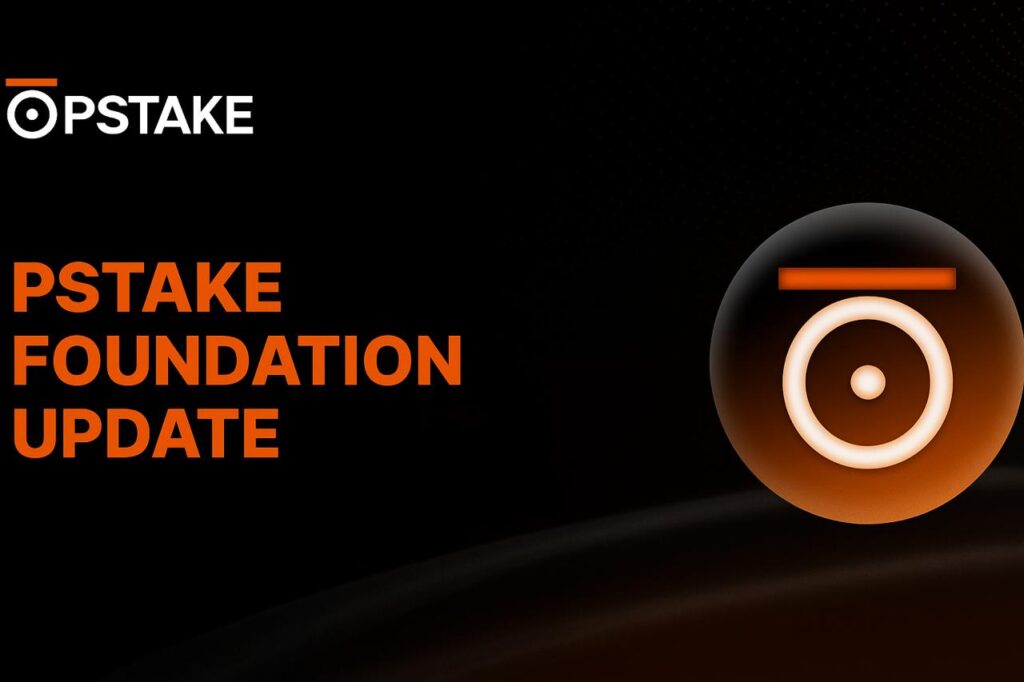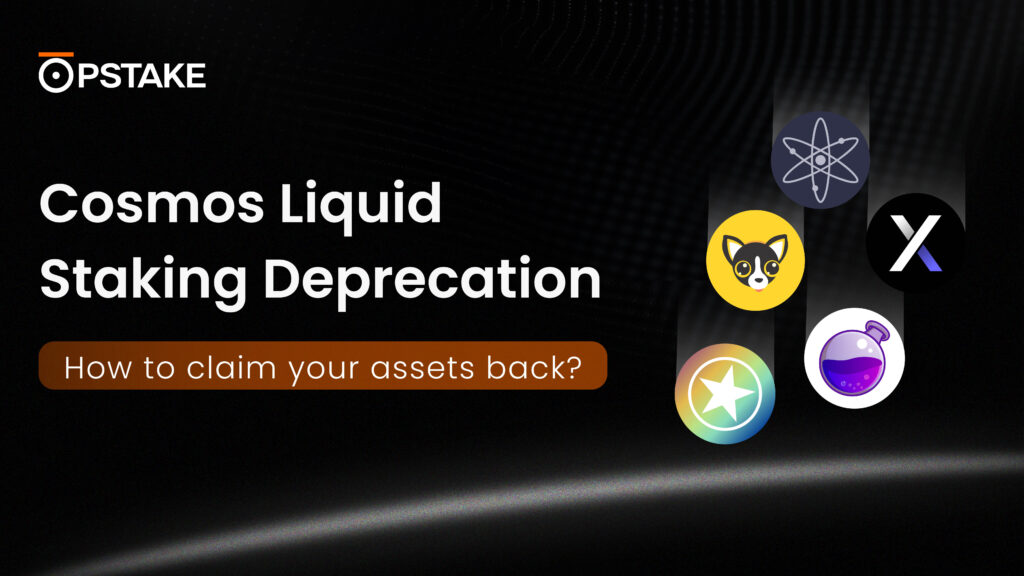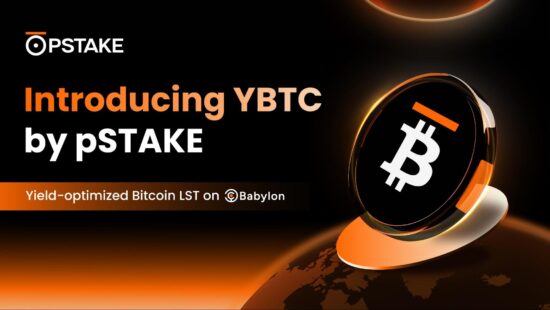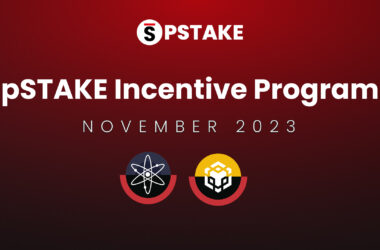pSTAKE Finance is excited to announce that its much anticipated yield-optimized Bitcoin Liquid Staking Token (LST) is launching in the coming weeks. Hello world, say hello to YBTC.
A unique trilemma exists for Bitcoin yields today—Liquidity, Yields, and Custody. At pSTAKE, our focus is completely on reliable access to yields and minimizing custodial risk.
The upcoming YBTC launch will mark an important milestone for pSTAKE as we continue our mission to provide higher (reliable) Bitcoin yields with fewer clicks.
Let’s find out more about what YBTC is, how it differs from other Bitcoin LSTs, and wen launch.
About YBTC
YBTC is a yield-optimized LST on top of Babylon’s BTC staking that can be used to get additional yields through Restaking and Liquidity Farming across the DeFi ecosystem.
YBTC is a representative token of users’ BTC deposits into the pSTAKE Finance protocol that is in turn staked into Babylon to earn Bitcoin Staking yields.
YBTC is accessible Bitcoin yields for everyone.
YBTC User flow
Let’s look at a user flow to better understand YBTC functioning.
- Satoshi connects their Bitcoin and Ethereum wallet of choice on pSTAKE
- Satoshi deposits BTC (on the Bitcoin Network) into pSTAKE
- pSTAKE stakes BTC with Babylon and mints YBTC on Ethereum
- Satoshi gets YBTC in their connected Ethereum wallet
- Satoshi can use YBTC to generate additional yields, primarily through Restaking and Liquidity Farming on Ethereum and connected ecosystems like Ethereum L2s and Bitcoin L2s
All existing pSTAKE users will directly receive YBTC equivalent to the BTC deposited by them. Users will simply need to connect their Ethereum wallets at launch.
YBTC Token Technicals
YBTC will follow an exchange rate model, exactly like the biggest yield-generating tokens like wstETH by Lido.
Coming to the example above, Satoshi’s YBTC will increase in value against BTC as it accrues staking rewards from Babylon’s Bitcoin Staking rewards. Satohshi’s YBTC will be worth more tomorrow than it is today. And this will continue to happen at regular fixed intervals.
Babylon is a pioneering Shared Security protocol for Bitcoin. Proof-of-Stake chains like the Babylon Chain will be secured by staked Bitcoin in exchange for receiving rewards in the form of native tokens of these chains.
Since pSTAKE will stake BTC into Babylon on behalf of users, it will accumulate certain staking rewards. These tokens will be auto-compounded into BTC such that users get yield in BTC rather than any other reward token.
Hence, YBTC will continuously increase in value at regular fixed intervals as auto-compounding is done.
Deposit BTC, Get BTC. No extra clicks.

YBTC–a new paradigm for Bitcoin Yields
The following three features highlight how YBTC is an optimal LST for higher yields with fewer clicks;
1. Minimal Risk
One of YBTC’s most important features is its minimal risk exposure.
Curated Yield Strategies
pSTAKE will actively try to minimize protocol and counterparty risks.
Alongside continuous audits and constant testing of new features/integrations, pSTAKE will limit the number of YBTC integrations onto DeFi protocols to reduce overall risk surface.
YBTC yield strategies and integrations will be driven by research, market landscape, and trust assumptions in an effort to minimize risks as much as possible.
Bitcoin Custody
pSTAKE is a unique Bitcoin yield protocol as it works directly with the BTC token on the Bitcoin network.
Other protocols work with custodial assets like WBTC, FBTC, and other BTC token variants. This adds another layer of trust assumption while putting BTC to work to generate yield.
Due to the Bitcoin Network’s limitations and lack of scripting, it is impossible to work with BTC in a fully-custodial way. When you deposit BTC into pSTAKE, the BTC is transferred to an account on Cobo, a well-reputed Bitcoin custodian, involving multiple signers to minimize the risk of centralization.
YBTC Liquidity
To reduce the risk surface even more, pSTAKE will not aim to build liquidity for YBTC on Decentralized Exchanges.
While liquidity is essential for users looking to enter/exit a token without traditional unstaking, it significantly increases the risk for users besides additional protocol risks.
LSTs can have contagion risks due to potential exploits. If LST A gets exploited with an infinite mint problem, the attacker can swap LST A for LST B and drain liquidity pools.
This has happened in the past in the BNB Chain Ecosystem and more recently in the Bitcoin Ecosystem too.
The opportunity cost lost for yields like Money Market integrations by not having DEX liquidity could be made up by having newer YBTC yield primitives like Restaking and Liquidity Farming.
2. Higher Yields
YBTC is not a traditional Liquid Staking Token. We’re not focusing on the typical, vanilla route of building liquidity and money market integrations that has been common for a lot of LSTs.
Traditionally, most LSTs have the same integration routes on the Ethereum side. These integrations are often looping in nature.
- Deposit LST as collateral on a money market
- Borrow the underlying asset
- Liquid stake it
- Repeat
While looping strategies were instrumental in growing liquid staking on Ethereum, they are not sustainable today. The fruition of such strategies will always be capped to the amount of token incentives provided by multiple LST protocols and money markets.
Not to mention that these strategies are also very heavy on the User Experience side with the need for multiple actions and the need to keep a constant eye and actively manage collateral positions.
Additional risks taken from the money market, Decentralized Exchange liquidity, contagion risk from the potential exploit of a fellow LST protocol, and more, have made looping a thing of the past.
Today, there is a window of opportunity for Bitcoin LSTs to begin yield utility right where Ethereum LSTs are finding their place–Restaking and Liquidity Farming.
pSTAKE will aim to make the best use of this window to create substantial utility for YBTC. The focus will be on creating unique utilities that generate additional yields through newer yield primitives in newer DeFi ecosystems.
Restaking
Restaking is a method of staking a token twice, securing two networks simultaneously with the same assets. It usually involves an LST, which can be restaked on another protocol.
In the case of Bitcoin Restaking, Babylon is the first layer (Staking), and pSTAKE is the first derivative layer. Users deposit BTC into pSTAKE, which is deposited into Babylon to generate yield. Users get YBTC that can then be restaked for additional yields.
pSTAKE will aim to work with multiple Restaking protocols on Ethereum and other emerging ecosystems like Bitcoin L2s to have a plethora of options for YBTC Restaking yields for our users.
This includes (and not limited to) Restaking protocols like EigenLayer, Symbiotic, Pell Network, SatLayer, and more.
Stake BTC. Get YBTC. Restake YBTC.
Liquidity Farming
The second interesting yield primitive for YBTC will be Liquidity Farming.
With L1s and L2s launching every single day, fragmentation is a bigger problem than ever before. While Chain Abstraction aims to solve fragmentation from a User Experience perspective, the fragmentation of liquidity remains to be a critical question mark.
These newly launching L1/L2 ecosystems have traditionally competed for ETH liquidity amongst themselves or with the Ethereum mainnet itself. However, today they are just beginning to tap into an asset that has been on the sidelines from DeFi ever since its existence. This $1.5T+ asset can change the game for Farming and suffice all major ecosystem’s liquidity needs.
But what’s better than Bitcoin? A yield-generating version of Bitcoin–YBTC.
By partnering with major upcoming chains prior to/right after their launch, YBTC can be used as a farming token. Users can simply take YBTC to these ecosystems and lock in a contract / use other protocols to farm yields in the chain’s newly launching native token.
Some notable new ecosystems here include BitLayer, Fuel Network, Soneium, and more. Who wouldn’t want a yield-generating token like YBTC?
3. Interoperability
The final salient YBTC feature will be its Interoperability.
pSTAKE will look to work with leading Interoperability and Chain Abstraction protocols to take YBTC on every major L1 and L2 ecosystem where there can be further yield opportunities.
Our mission is to provide higher yields (through restaking and liquidity farming) with fewer clicks. A seamless user experience combined with multiple risk-minimized yield options can bring that to life.
Timeline for YBTC
The following timeline presents our targets for the YBTC rollout and its integrations onto new networks. Please note that these dates are tentative timelines and could be subject to change:
| What happens? | Timeline |
| YBTC Details | 3rd week of October 2024 |
| Announcing YBTC Launch Partners for Yield Integrations, Risk Minimization, and Interoperability | 4th week of October 2024 onwards |
| YBTC Audit Completion | End of October 2024 |
| YBTC Launch on Ethereum | Mid-November (tentative) |
| YBTC Yield Integrations | Post launch |
| More wallets support and audits | Post launch |
About pSTAKE Finance
pSTAKE Finance is a Bitcoin Yield and Liquid Staking protocol, backed by Binance Labs.
With pSTAKE Finance, users can liquid stake BTC to get rewards from Babylon’s Trustless BTC staking for securing other app chains while maintaining their liquidity.
Accessing Bitcoin yields should not be complex, risky, or unsafe. With four years of liquid staking expertise and expert-curated yield strategies, pSTAKE Finance helps individuals and institutions put their BTC to work in BTCfi.
pSTAKE Finance has partnered with leading blockchain security firms, such as Halborn, Hexens, Oak Security, Immunefi, Forta, and more, to offer a secure liquid staking product suite.
PSTAKE is the governance and incentivization token of the pSTAKE Finance protocol. It has some of the most prominent investors, including Binance Labs, DeFiance Capital, Spartan Group, Coinbase Ventures, and Kraken Ventures.










